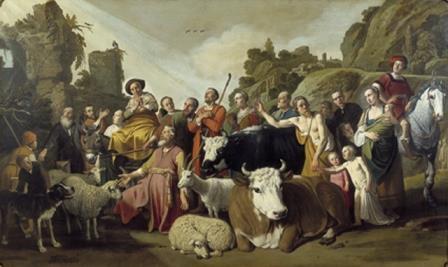Assessment of the claim
14. The restitution application concerns an item of cultural value that is part of the NK collection. The present application was submitted after 30 June 2015 and therefore the Committee must give advice about this application ‘on the basis of the yardsticks of reasonableness and fairness’. In an assessment on the basis of these yardsticks it is furthermore the case that the return of a claimed item of cultural value can only be recommended if it has been established that the right of ownership is highly likely and if there are no indications that contradict this, as expressed in the eighth recommendation of the Ekkart Committee in 2001. It is explained in the notes to this recommendation that conclusive proof of ownership is not requested from the former owner or the then owner’s heirs.
15. The documents referred to in considerations 6 to 8 give a description of the claimed painting’s prewar ownership situation. It follows from the document of 20 May 1930 that the bank acquired the claimed painting from Granaat at that time. One of the conditions of this purchase was that Granaat had to buy it back when the bank requested him to do so. When the bank made such a request in 1936 and Granaat was unable to buy it back, the bank sold the claimed painting to Herman Hamburger. This emerges from the bank’s letter to Granaat of 18 June 1936 that Granaat quoted. Thereafter the claimed painting was kept by Granaat for Herman Hamburger at 512 Herengracht, from where it was ultimately removed by the Mühlmann Agency. There are no indications that the claimed painting had at that moment become the property (again) of the bank or of Gustaaf Hamburger.
16. When the overview of the facts was sent to the Applicant she was asked on what grounds she believed she had a case for restitution of the claimed painting despite the absence of any indications that she is an heir of Herman Hamburger. In her response the Applicant contended that the documents relating to the post-war restitution of other artworks on the Plietzsch list by the SNK to Gustaaf Hamburger are an indication that the actual owner (she uses the term ‘beneficial owner’) of the currently claimed painting was Gustaaf Hamburger. According to the Applicant a number of artworks on the Plietzsch list, with provenances comparable to that of the claimed painting, were given back to Gustaaf Hamburger after the war. The claimed painting should therefore be returned to her.
17. All the paintings on the Plietzsch list were part of the transaction of 20 May 1930 between Siegfried Granaat and the N.V. Hamburger & Co’s Bankierskantoor. Above there is a description of what happened to five of these paintings after the war. The ‘large still life’ by De Heem and the paintings by Kalf and Van Mieris were given back to Gustaaf Hamburger by the SNK, but not until the heir of Herman Hamburger, Gilbert Hamburger, had granted authorization or had given permission. The ‘still life’ by De Heem and the painting by Hendrik Pot were handed back to Gustaaf Hamburger. It is not known whether Gilbert Hamburger also gave permission for these returns.
So although five works on the Plietzsch list with provenances comparable to that of the claimed painting were restituted to Gustaaf Hamburger, the fact that the return of three of these works required authorization or permission from Gilbert Hamburger is in fact an indication that apparently these works were not considered to be the property of Gustaaf Hamburger. The Committee furthermore takes the view – as explained in considerations 9 and 10 – that there are clear indications that at the time it was acquired by the Mühlmann Agency in 1941 it belonged to Herman Hamburger.
With regard to the assessment of the present application, the Committee therefore attributes no decisive significance to the circumstance that after the war the SNK supposedly returned two of the artworks referred to on the Plietzsch list to Gustaaf Hamburger without authorization or permission from Herman Hamburger or his heirs.
18. On the grounds of the above the Committee finds that it has not been sufficiently established that in 1941, at the time it was obtained by the Mühlmann Agency, the claimed painting belonged to Gustaaf Hamburger. It will therefore recommend rejection of the Applicant’s claim.
